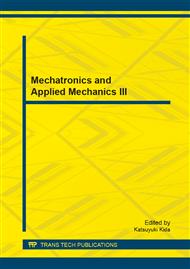p.496
p.503
p.510
p.515
p.519
p.524
p.534
p.540
p.545
Stress Analysis of Isotropic Material Flywheel Battery Rotor
Abstract:
The strength of metal materials is far less than the new composite material, such as carbon fiber. However, the price of the metal material and manufacturing cost are much lower than composite materials, which makes isotropic material much more practical for flywheel rotor. Through the stress analysis of isotropic material rotor, we can optimize the parameters of the rotor, thus for isotropic material provides the basis for the design of the rotor for flywheel battery.
Info:
Periodical:
Pages:
519-523
Citation:
Online since:
February 2014
Authors:
Keywords:
Price:
Сopyright:
© 2014 Trans Tech Publications Ltd. All Rights Reserved
Share:
Citation:


